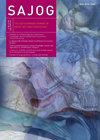肯尼亚育龄妇女血清抗米勒激素的年龄相关变化
IF 0.3
Q4 OBSTETRICS & GYNECOLOGY
South African Journal of Obstetrics and Gynaecology
Pub Date : 2022-12-14
DOI:10.7196/sajog.2022.v28i2.2067
引用次数: 0
摘要
背景抗米勒激素(AMH)是由卵巢窦卵泡的颗粒细胞产生的,在卵泡发生过程中对优势卵泡的破坏起作用。血清AMH水平与卵巢中发育中卵泡的数量成正比,并反映卵巢储备。AMH随年龄变化的诺模图存在于高加索人群中,但没有来自非洲当地的数据。目标。在未经选择的东非育龄妇女人群中确定年龄特异性血清AMH中位数水平。方法。我们回顾性分析了2015年至2019年期间在肯尼亚内罗毕阿加汗大学医院使用Beckman Coulter AMH Gen II酶联免疫吸附试验进行AMH检测的1718名女性的数据。得出年龄特异性AMH中位数水平,并以5年年龄段表示。然后对AMH水平进行对数变换,并使用自然样条函数中的线性回归,在散点图上显示,以证明生殖年龄的变化。后果接受AMH测试的女性的中位(四分位间距(IQR))年龄为38(19-49)岁。研究人群的中位(IQR)血清AMH水平为0.87(0.01-17.10)ng/mL。AMH浓度与年龄呈负相关,逐渐下降,增加1年导致AMH相应下降0.18ng/mL。卵巢储备减少的女性比例随着年龄的增长呈指数级增长,从20-24岁的14.9%增加到35-39岁的48.7%。结论根据一个主要由非洲黑人女性组成的大型数据集,这项研究证实,血清AMH随着年龄的增长而下降,正如其他地方在高加索人群中报道的那样。然而,随着年龄的增长,卵巢储备减少的女性人数高于预期。未来对普通人群卵巢储备的前瞻性研究可能会揭示可能影响该土著人群AMH水平和生殖能力的潜在生物、生殖和环境因素。本文章由计算机程序翻译,如有差异,请以英文原文为准。
Age-related changes in serum anti-Müllerian hormone in women of reproductive age in Kenya
Background. Anti-Müllerian hormone (AMH) is produced by the granulosa cells of ovarian antral follicles and plays a role in therecruitment of dominant follicles during folliculogenesis. The serum level of AMH is proportional to the number of developing folliclesin the ovaries and reflects ovarian reserve. Nomograms of AMH variation with age exist from Caucasian populations, but there are none drawn from local African data.Objectives. To establish age-specific median serum AMH levels in an unselected East African population of women of reproductive age.Methods. We retrospectively analysed data on 1 718 women who underwent AMH testing using the Beckman Coulter AMH Gen IIenzyme-linked immunosorbent assay during the period 2015 - 2019 at Aga Khan University Hospital, Nairobi, Kenya. Age-specific median AMH levels were derived and presented in 5-year age bands. AMH levels were then log-transformed and, using linear regression in a natural spline function, presented on a scatter plot to demonstrate variation across reproductive age.Results. The median (interquartile range (IQR)) age of women who were tested for AMH was 38 (19 - 49) years. For the study population, the median (IQR) serum AMH level was 0.87 (0.01 - 17.10) ng/mL. The AMH concentration was inversely related to age, with a progressive decline whereby an increase of 1 year resulted in a corresponding decrease in AMH of 0.18 ng/mL. The proportion of women with decreased ovarian reserve increased exponentially with age from 14.9% in those aged 20 - 24 years to 48.7% at 35 - 39 years.Conclusion. From a large dataset of mainly black African women, this study confirms that serum AMH declines with advancing age,as reported elsewhere in Caucasian populations. There was, however, a higher than expected number of women with diminished ovarian reserve for age. Future studies prospectively exploring ovarian reserve in the general population could unravel underlying biological, reproductive and environmental factors that may influence AMH levels and reproductive capacity in this indigenous population.
求助全文
通过发布文献求助,成功后即可免费获取论文全文。
去求助
来源期刊

South African Journal of Obstetrics and Gynaecology
Medicine-Obstetrics and Gynecology
CiteScore
0.40
自引率
0.00%
发文量
5
审稿时长
15 weeks
期刊介绍:
The SAJOG is a tri-annual, general specialist obstetrics and gynaecology journal that publishes original, peer-reviewed work in all areas of obstetrics and gynaecology, including contraception, urogynaecology, fertility, oncology and clinical practice. The journal carries original research articles, editorials, clinical practice, personal opinion, South Africa health-related news, obituaries and general correspondence.
 求助内容:
求助内容: 应助结果提醒方式:
应助结果提醒方式:


